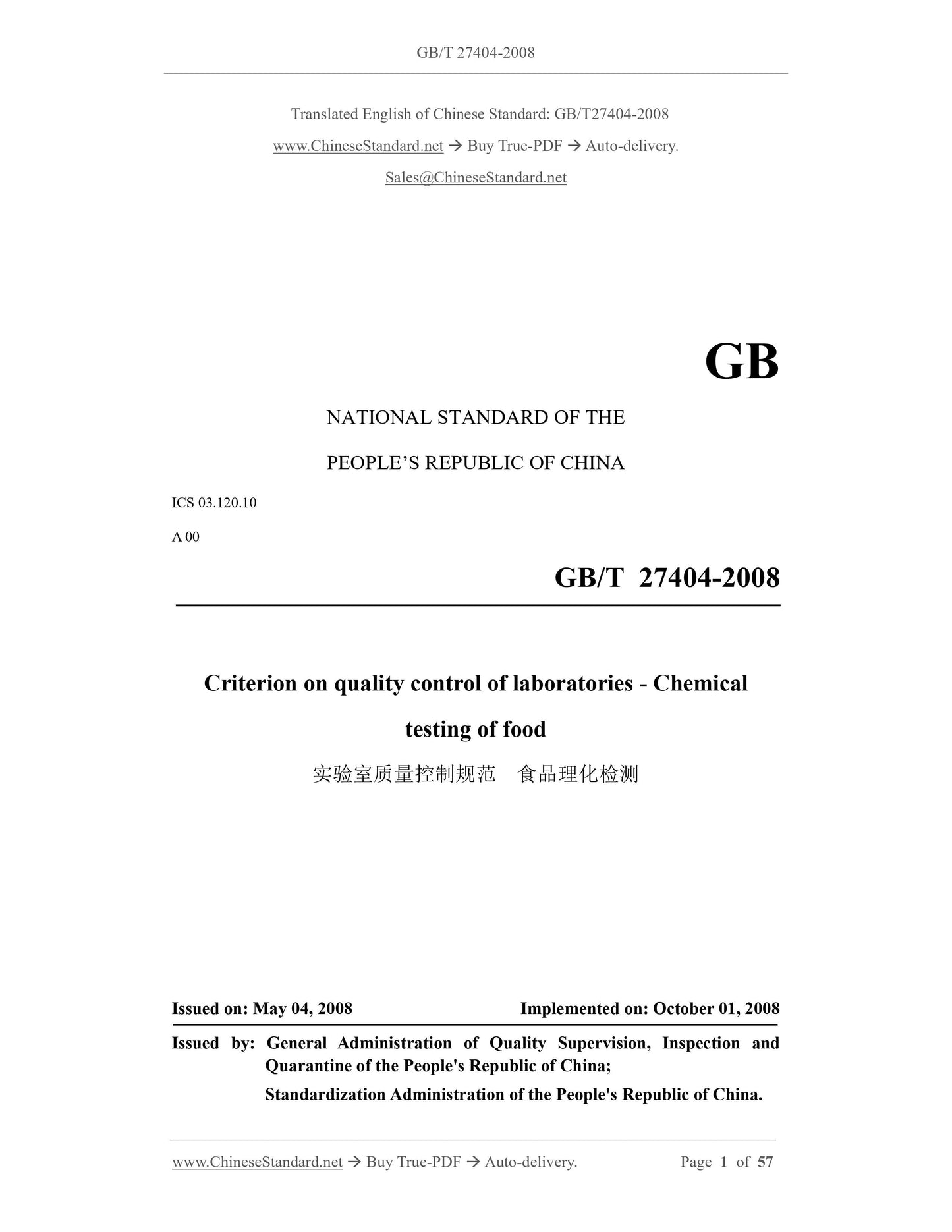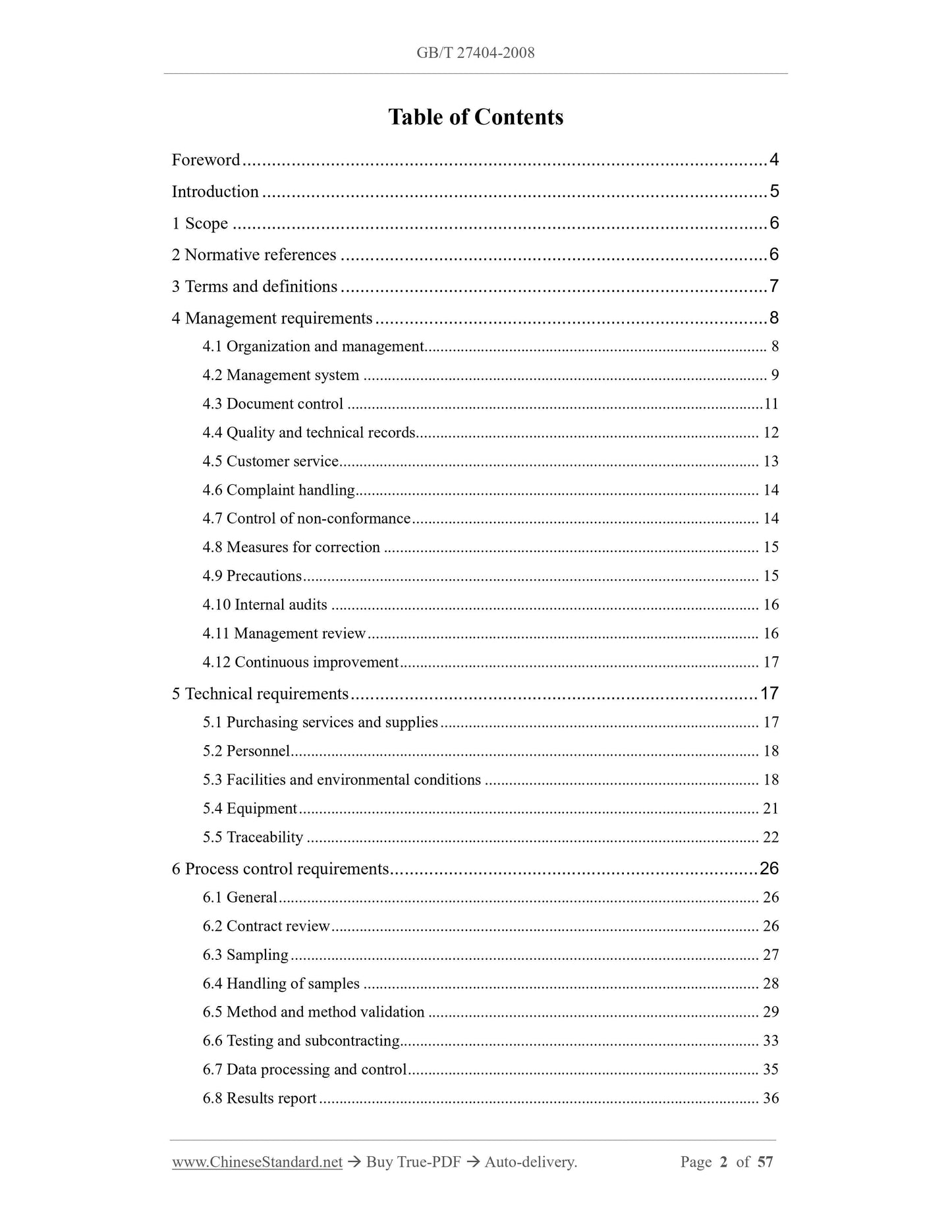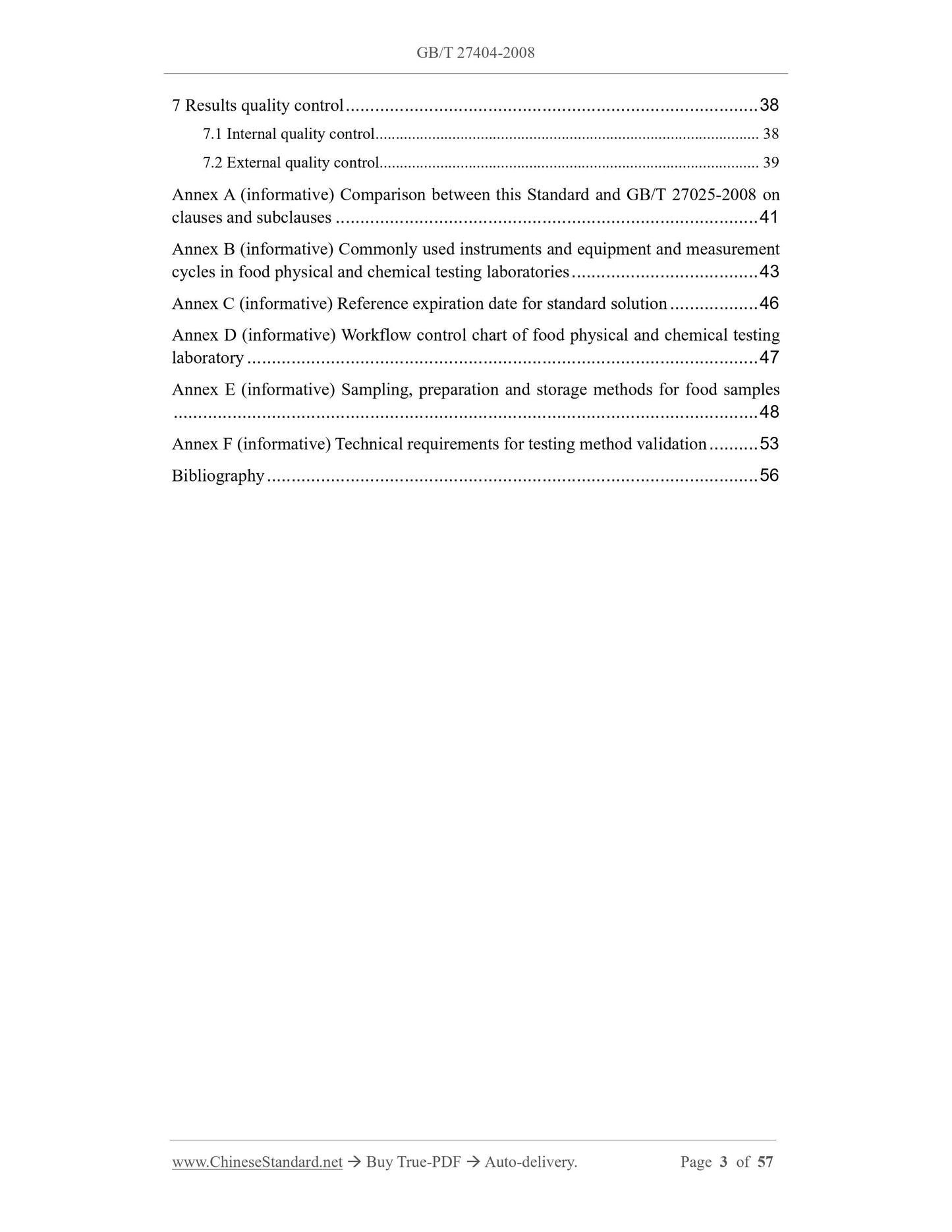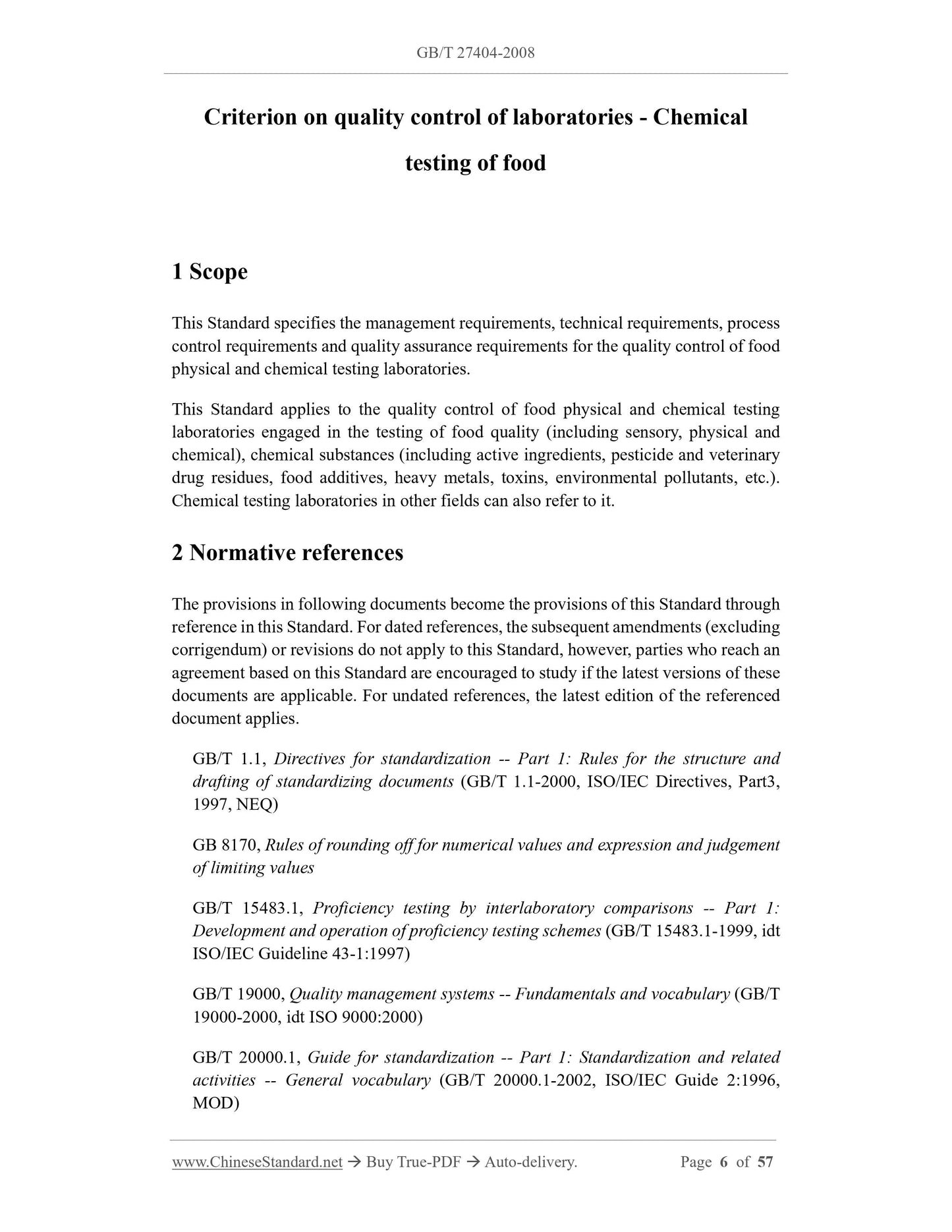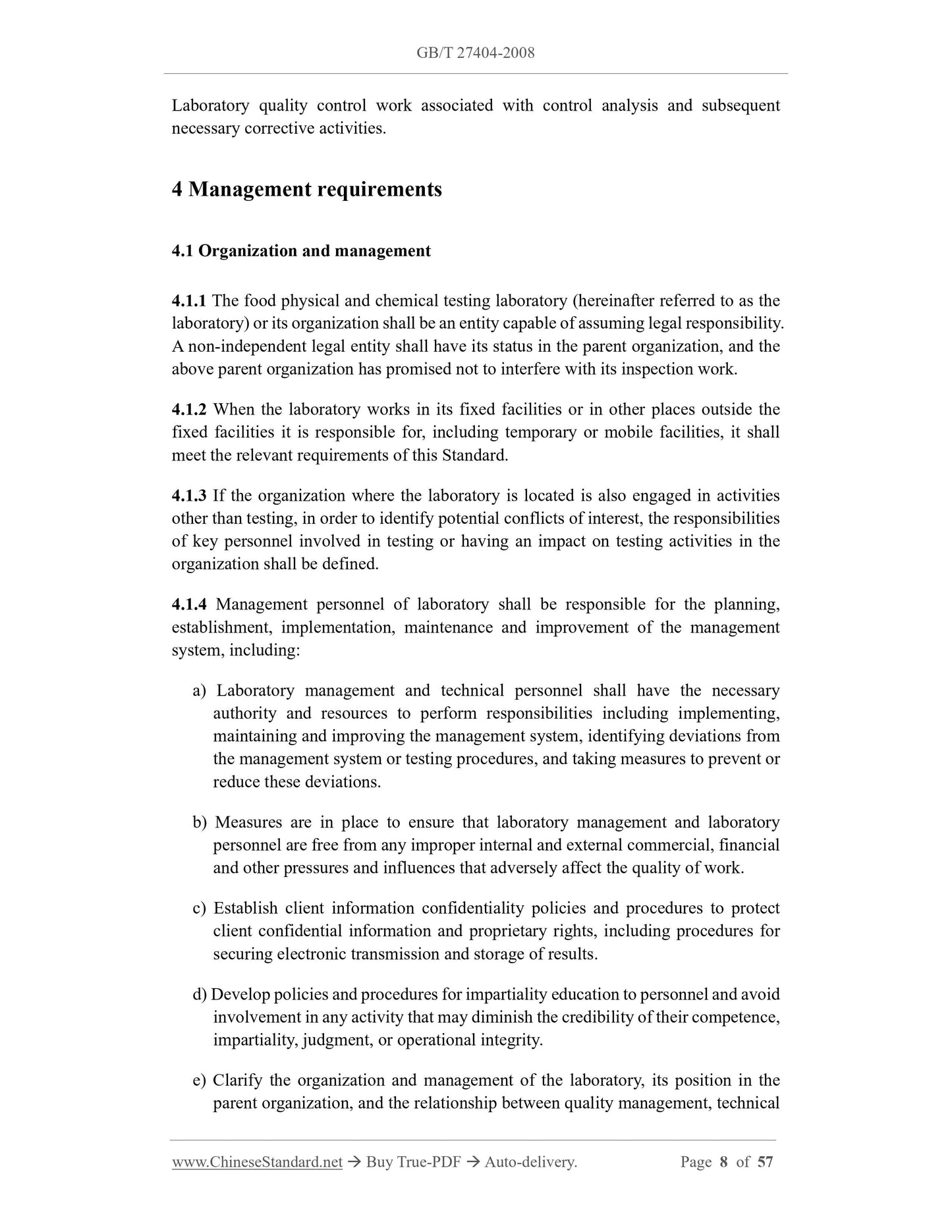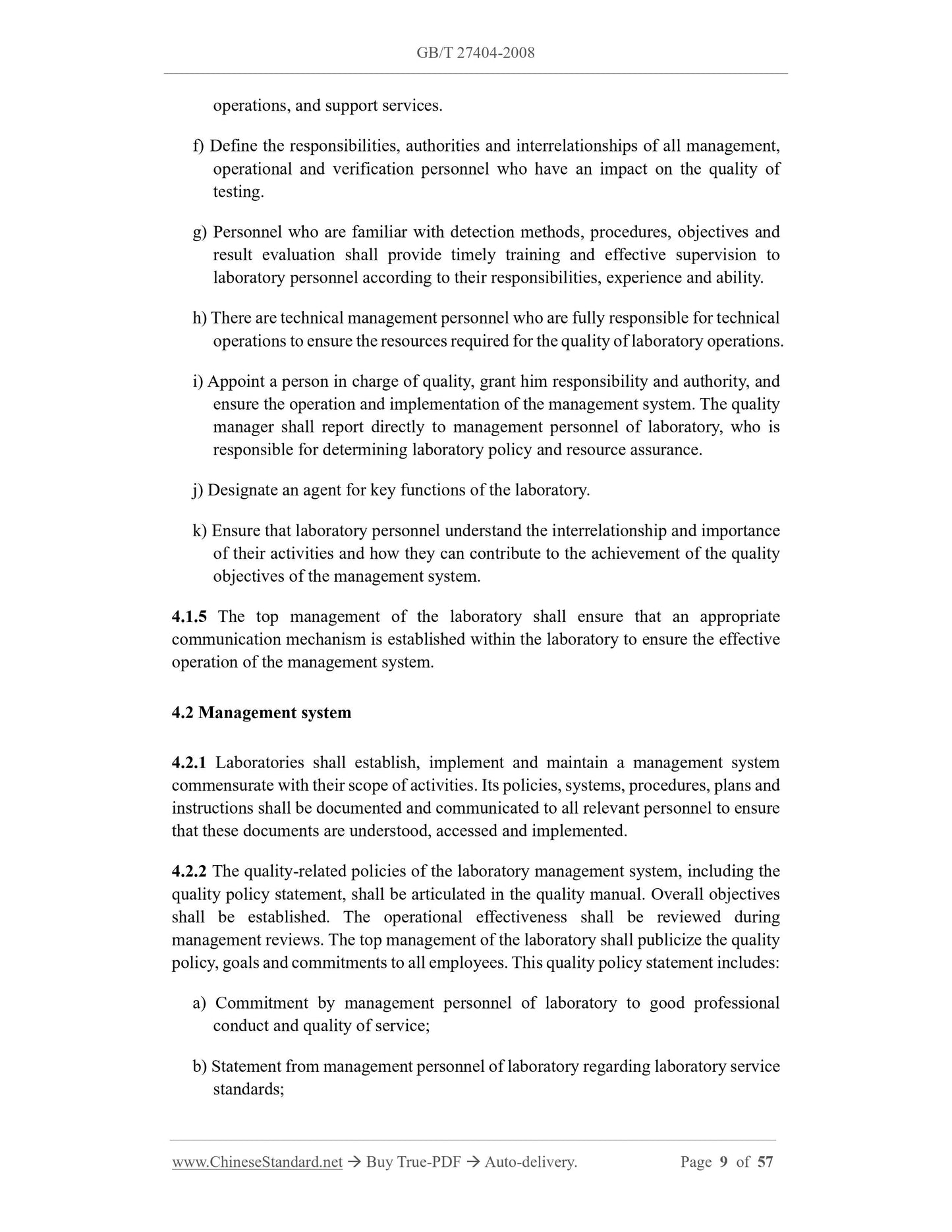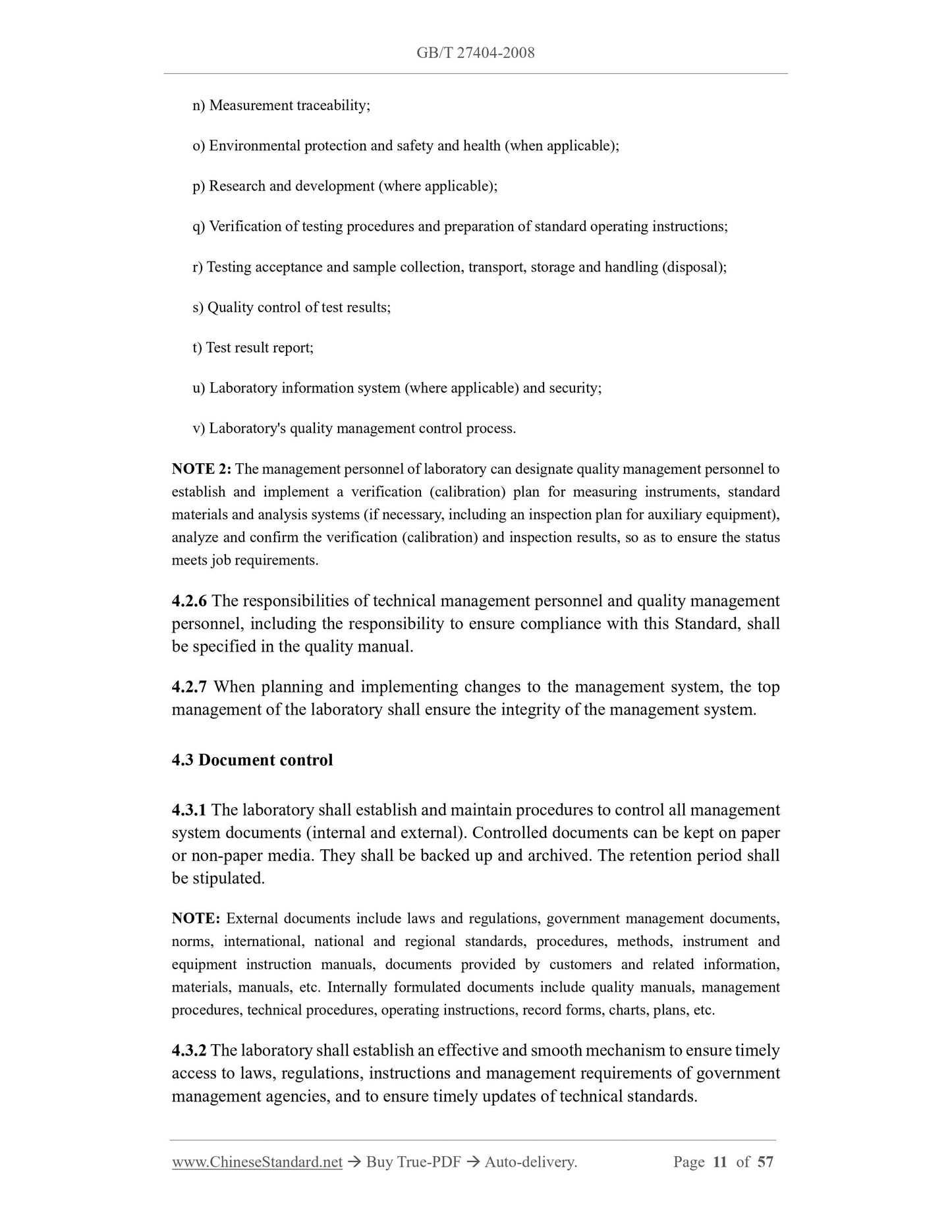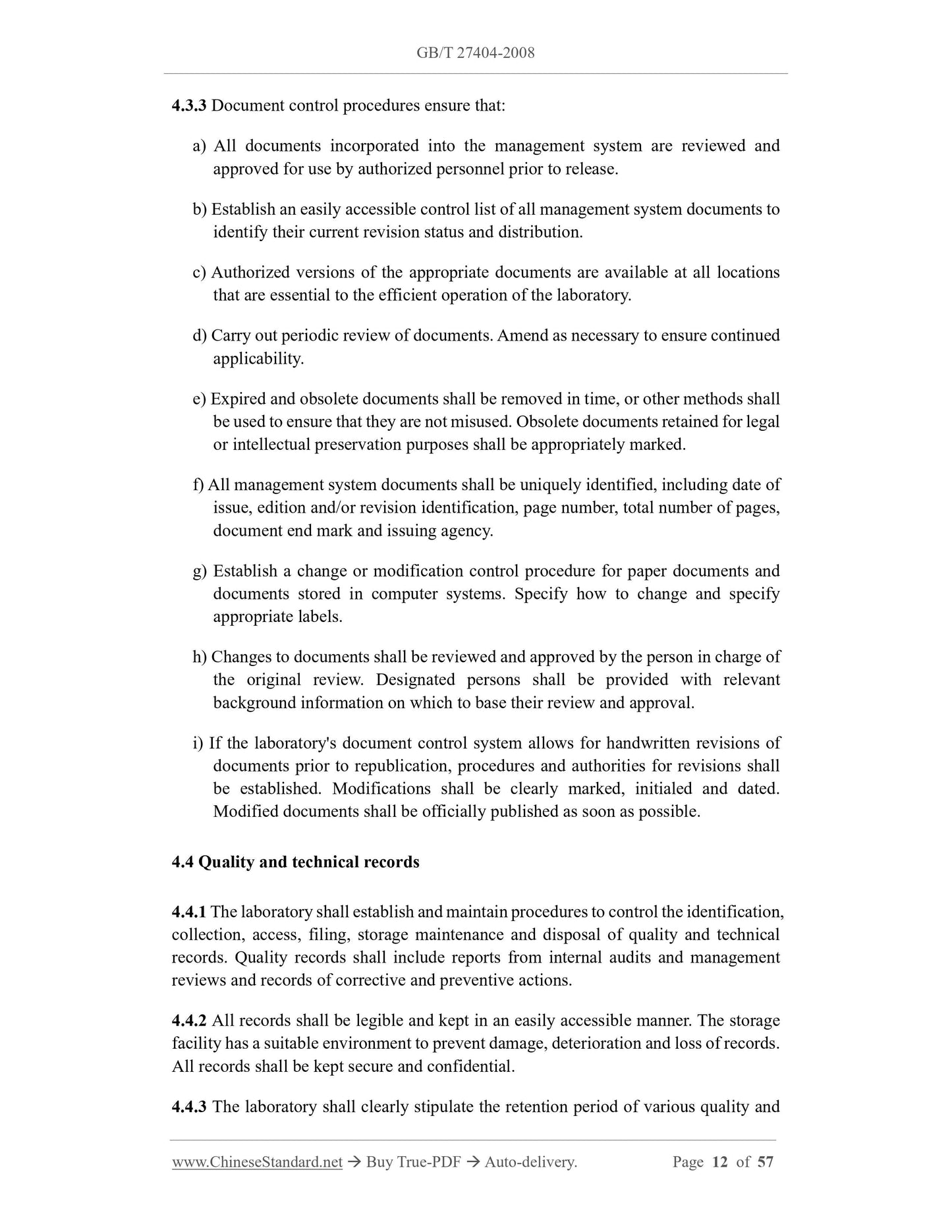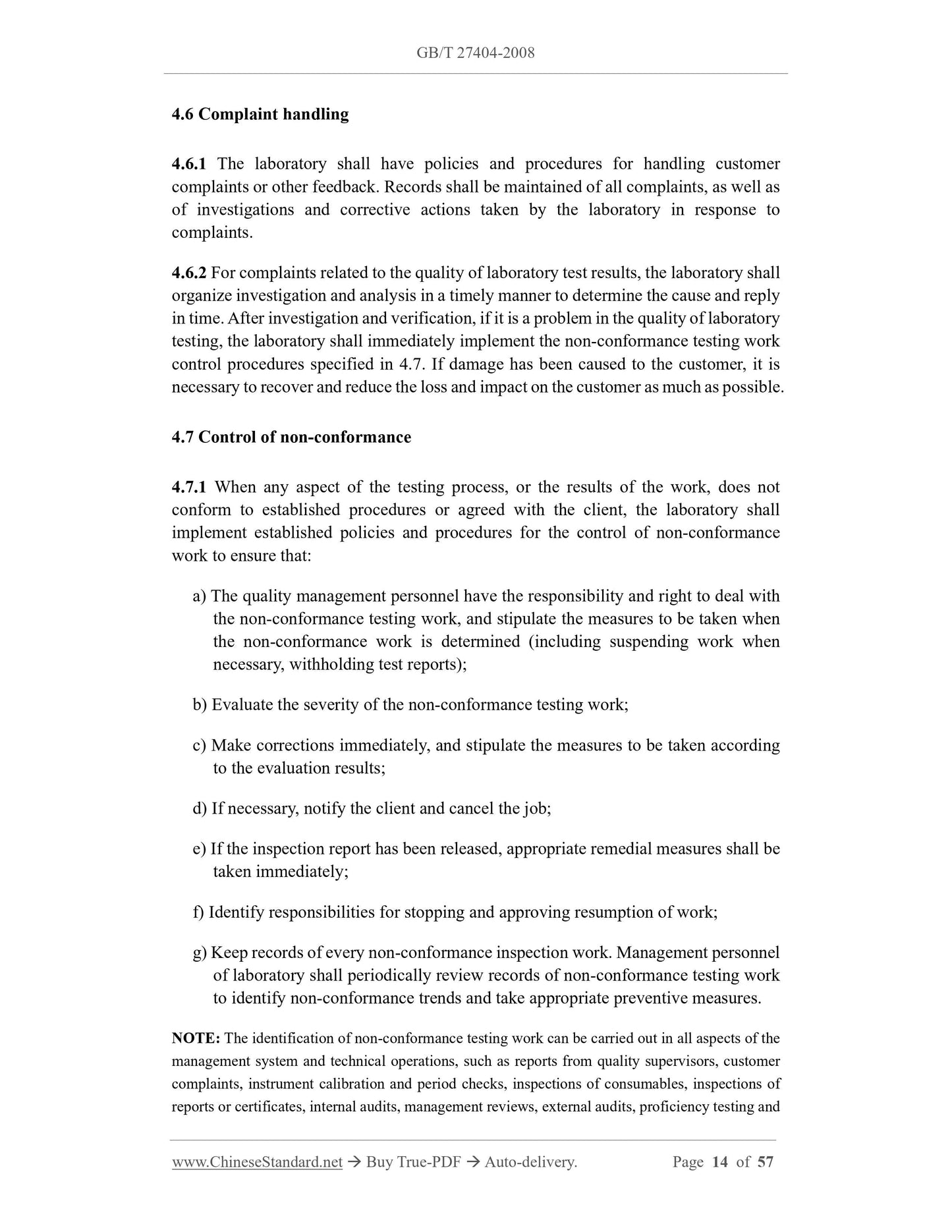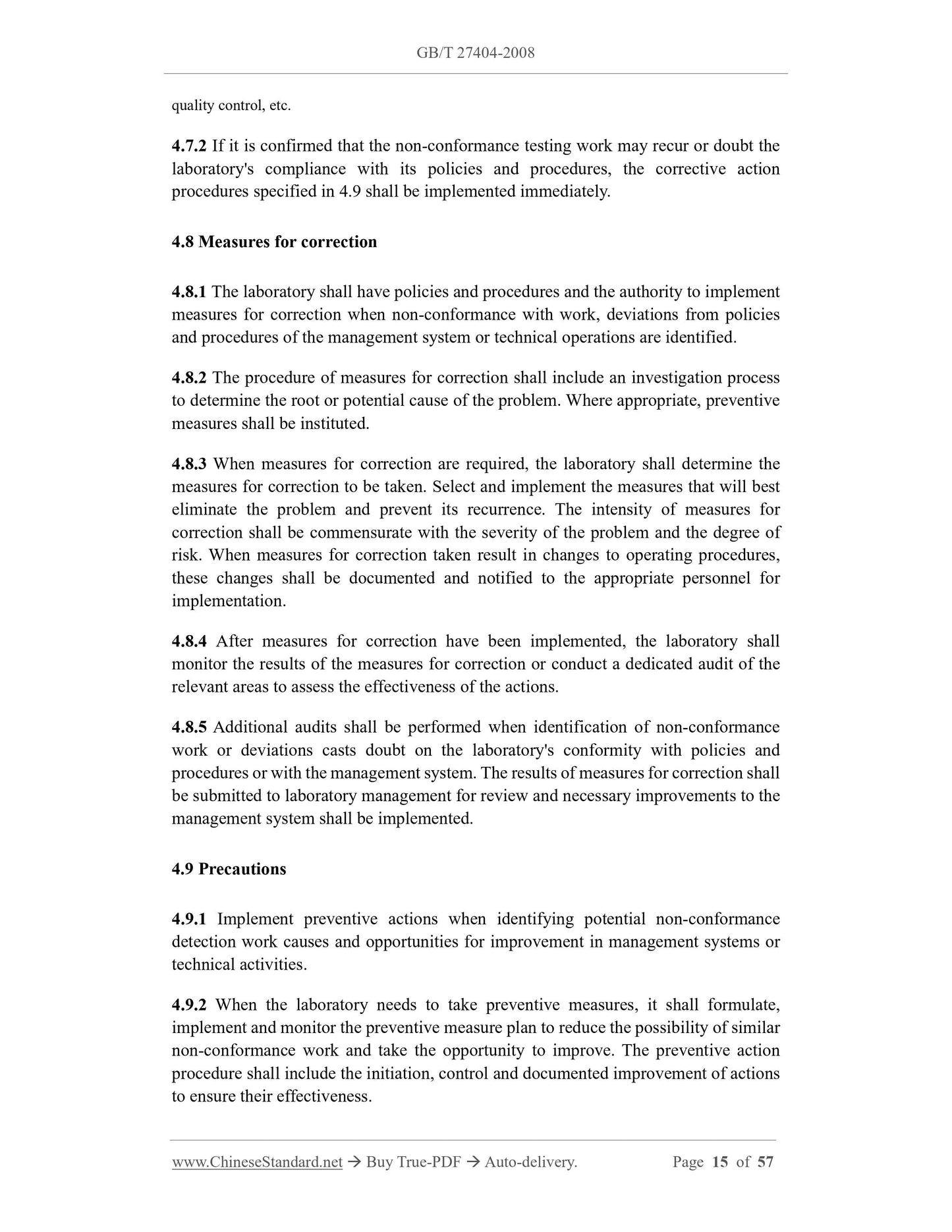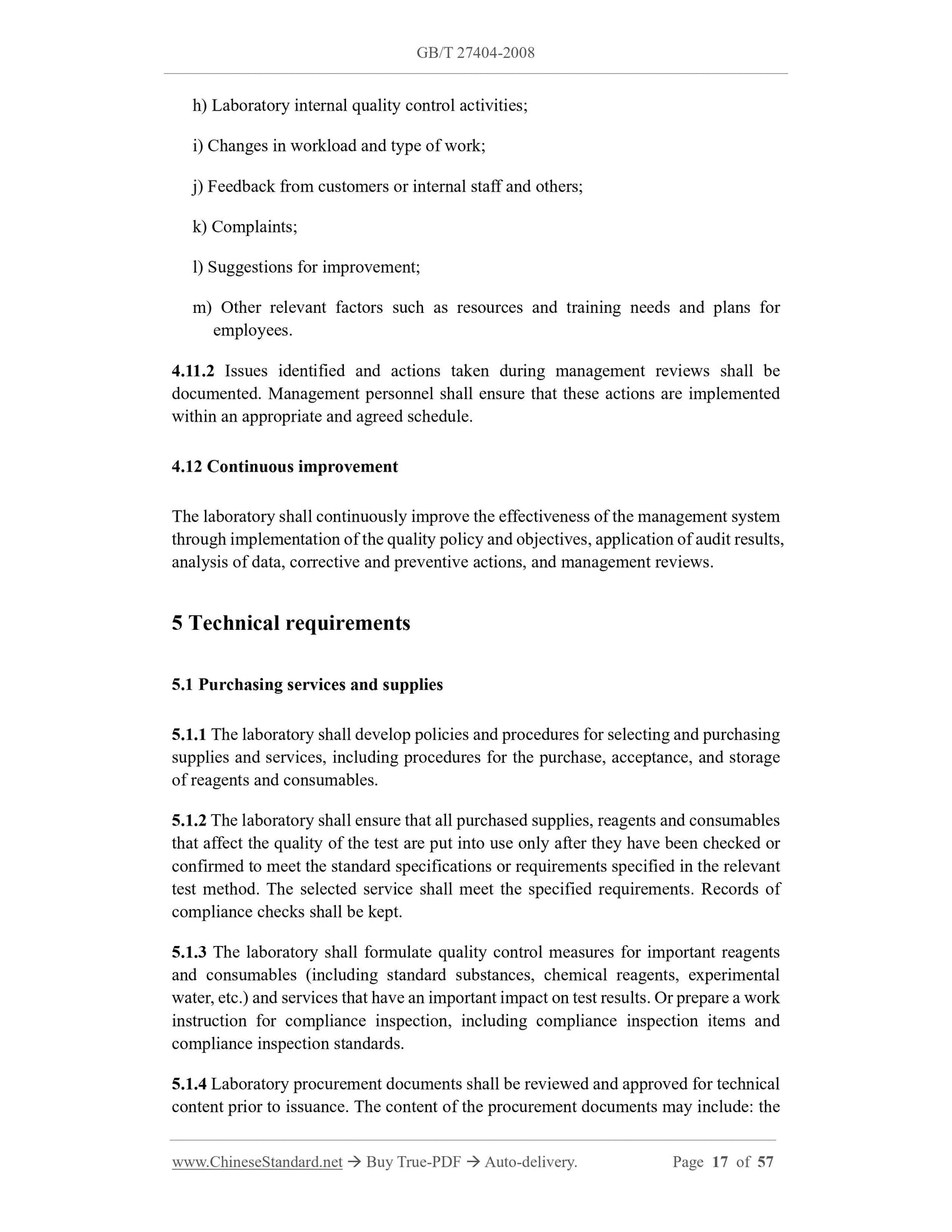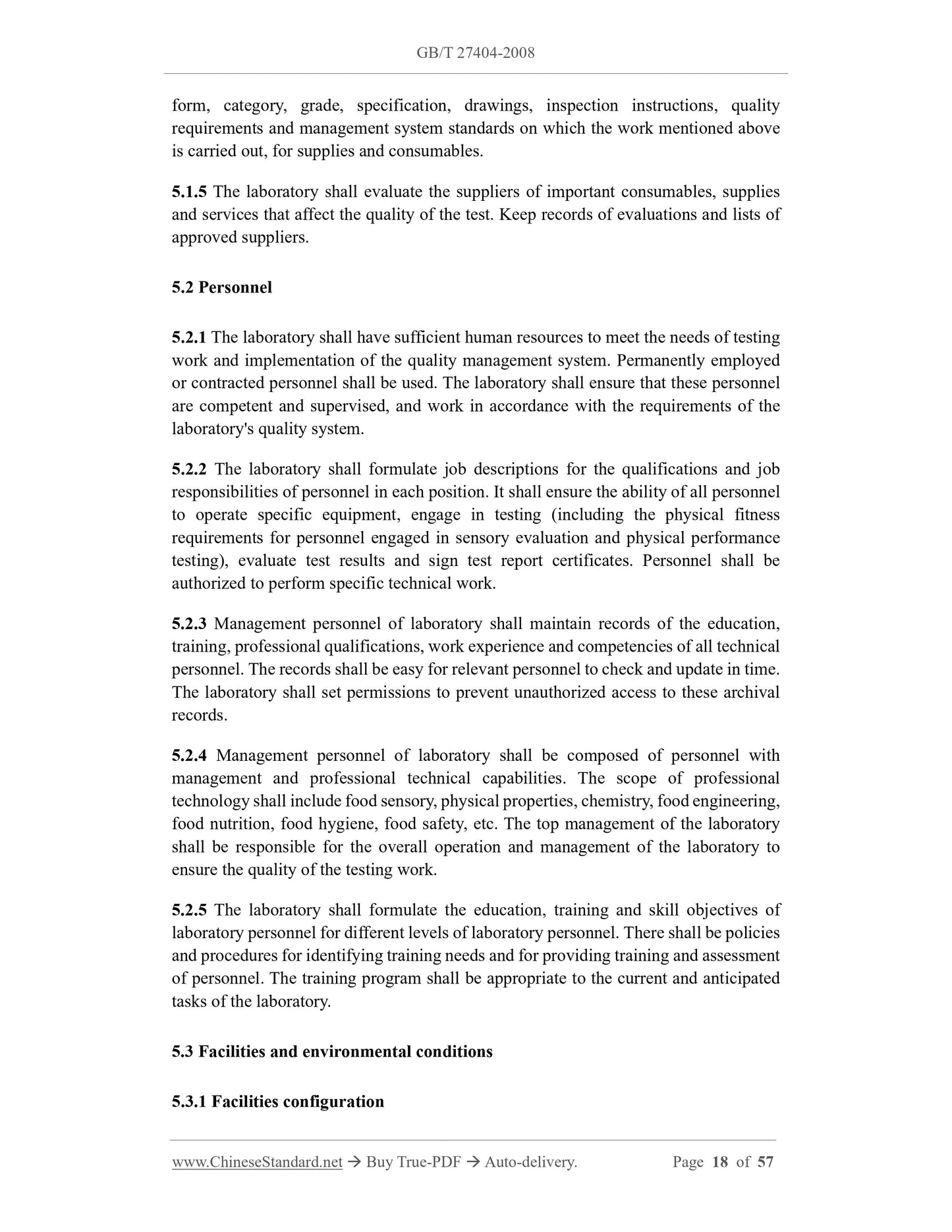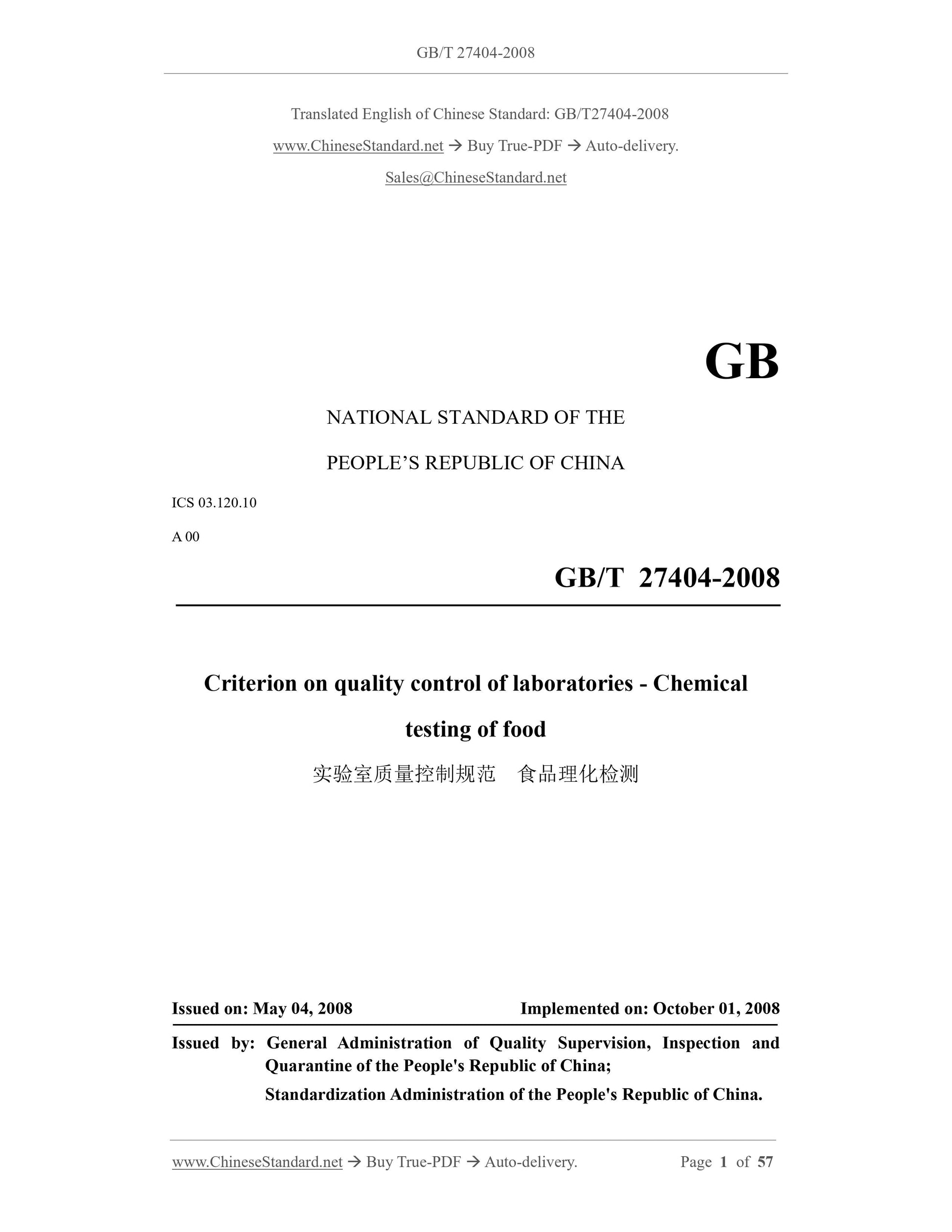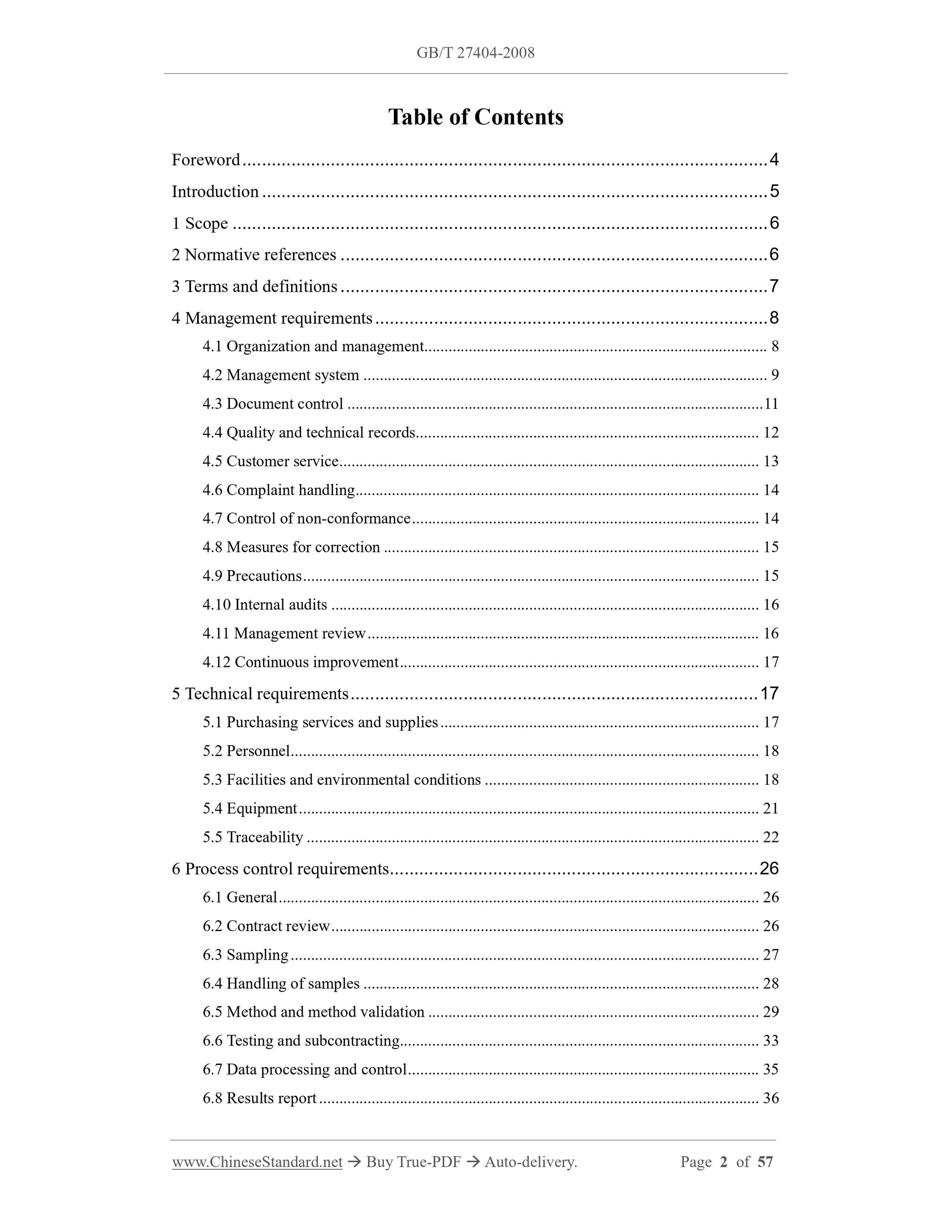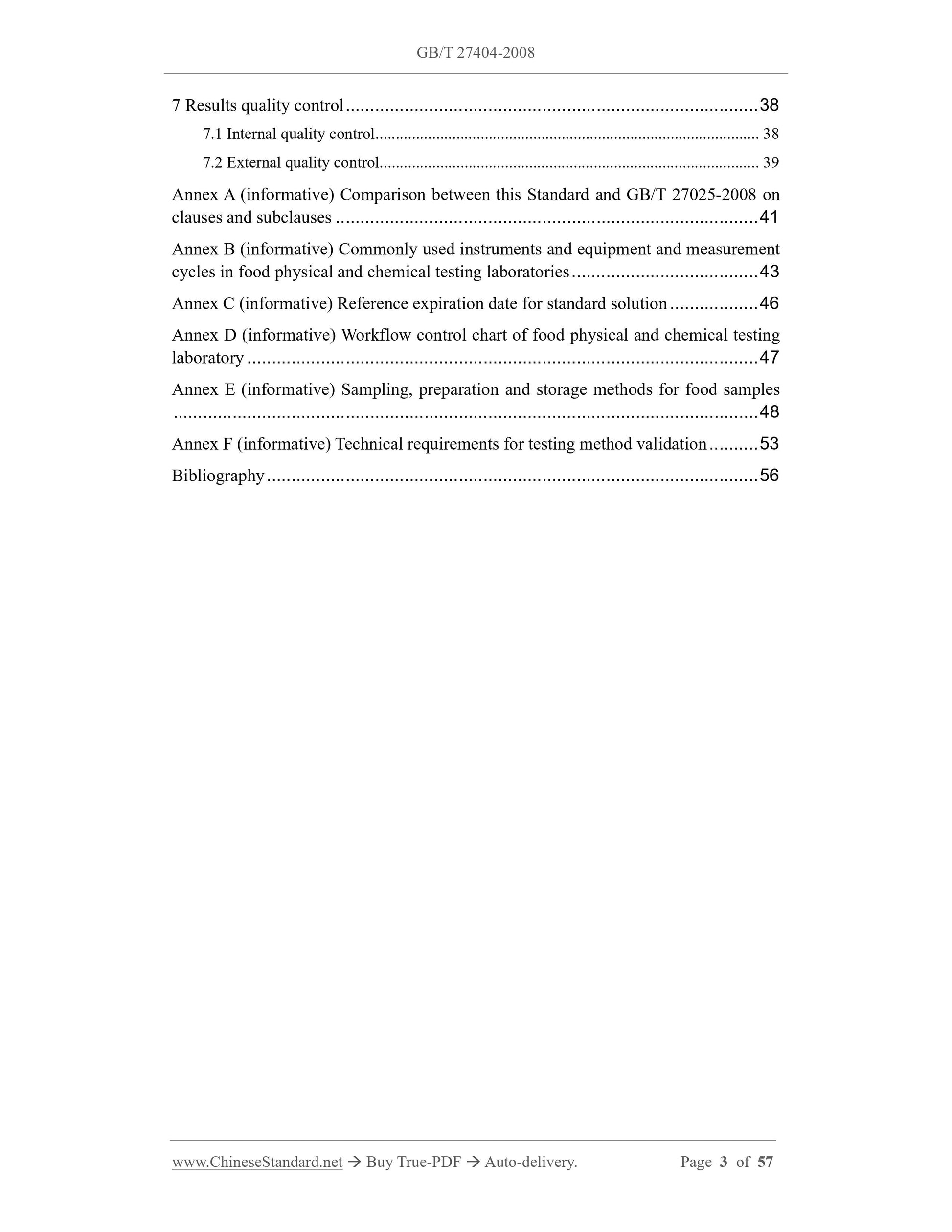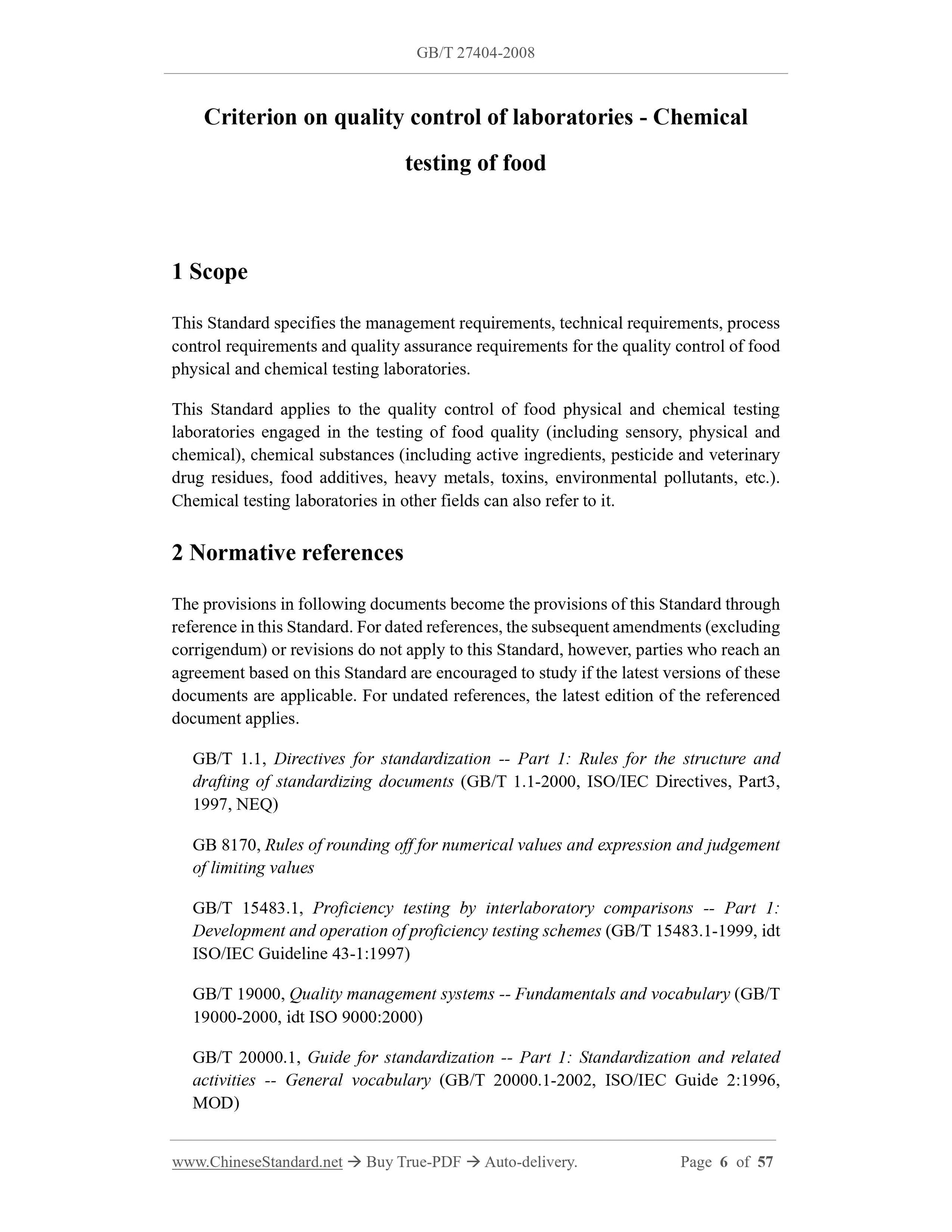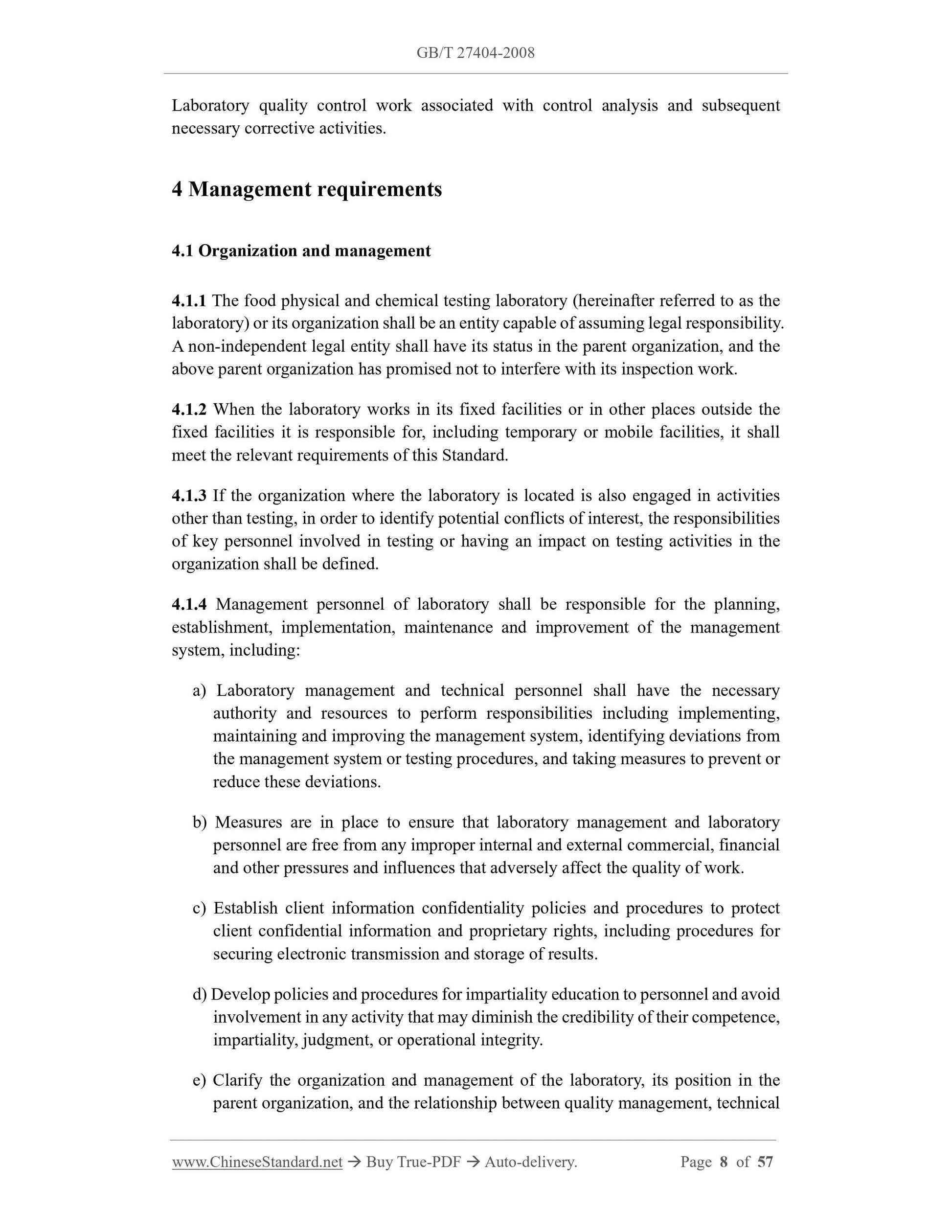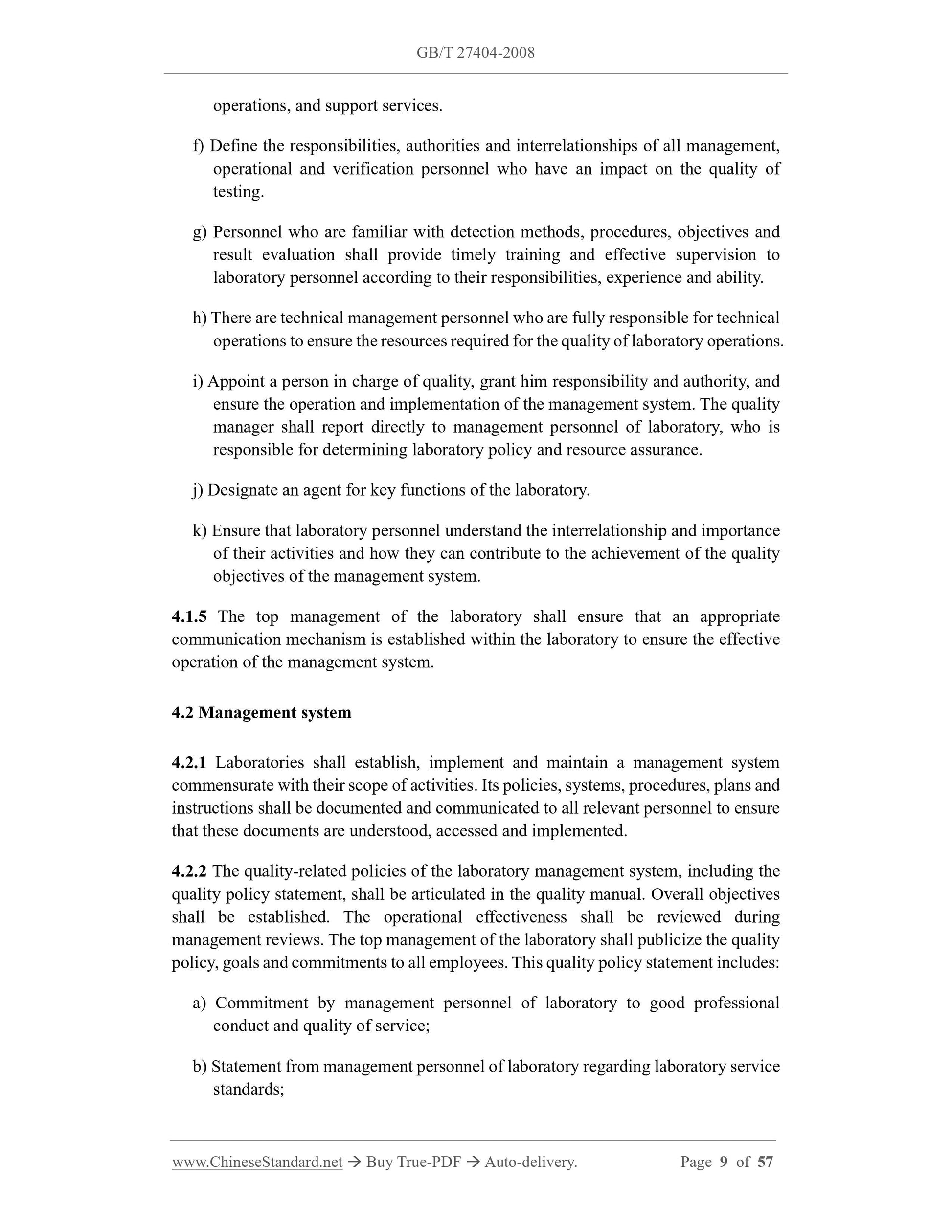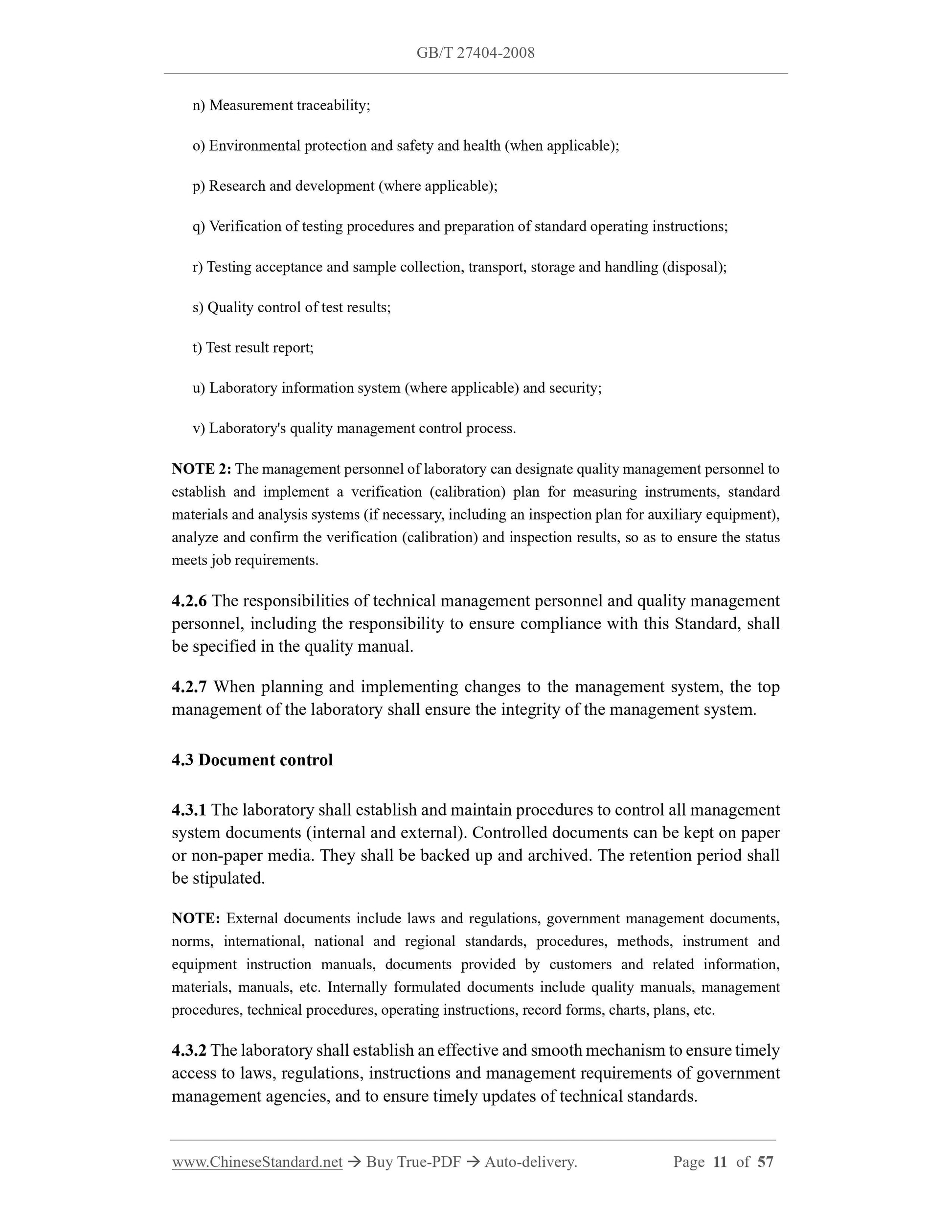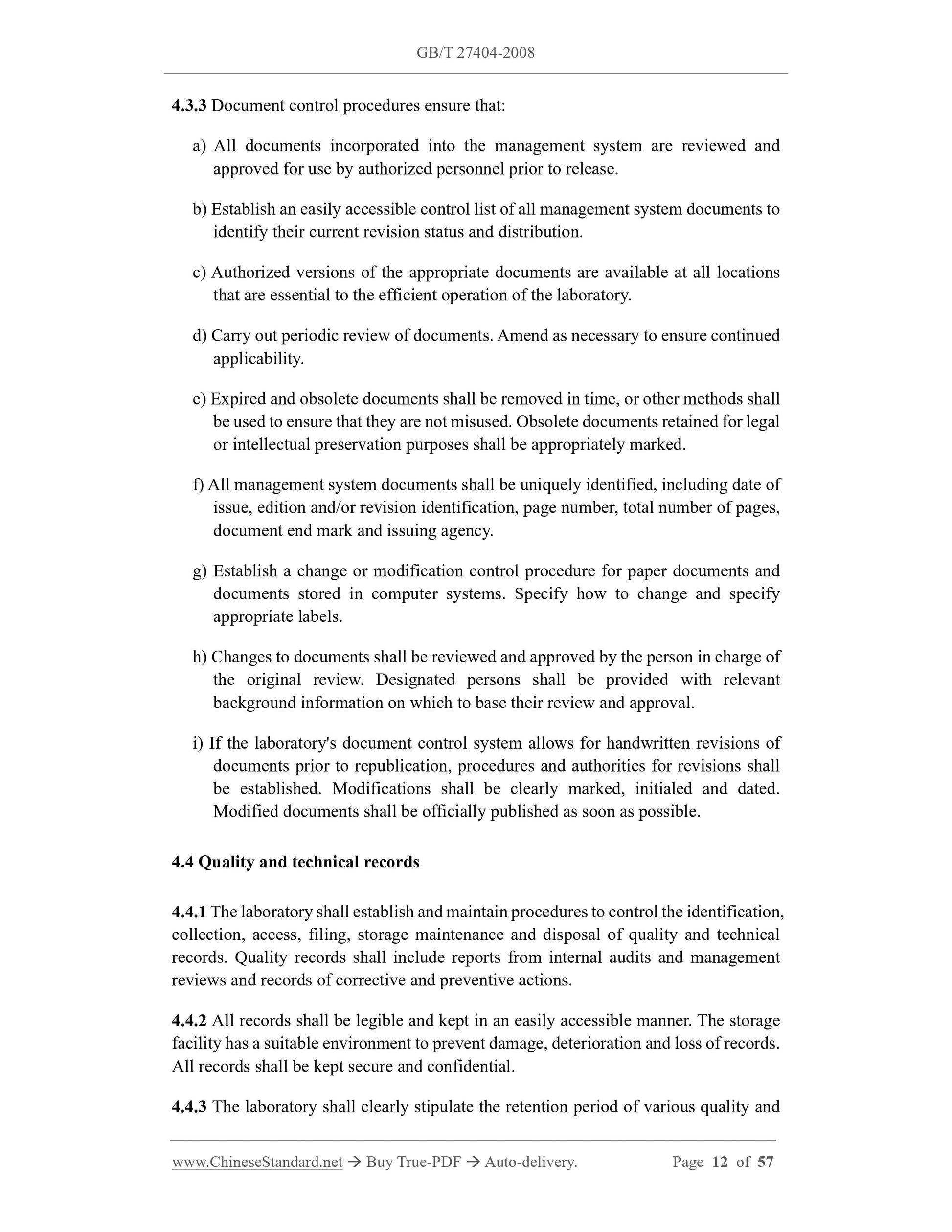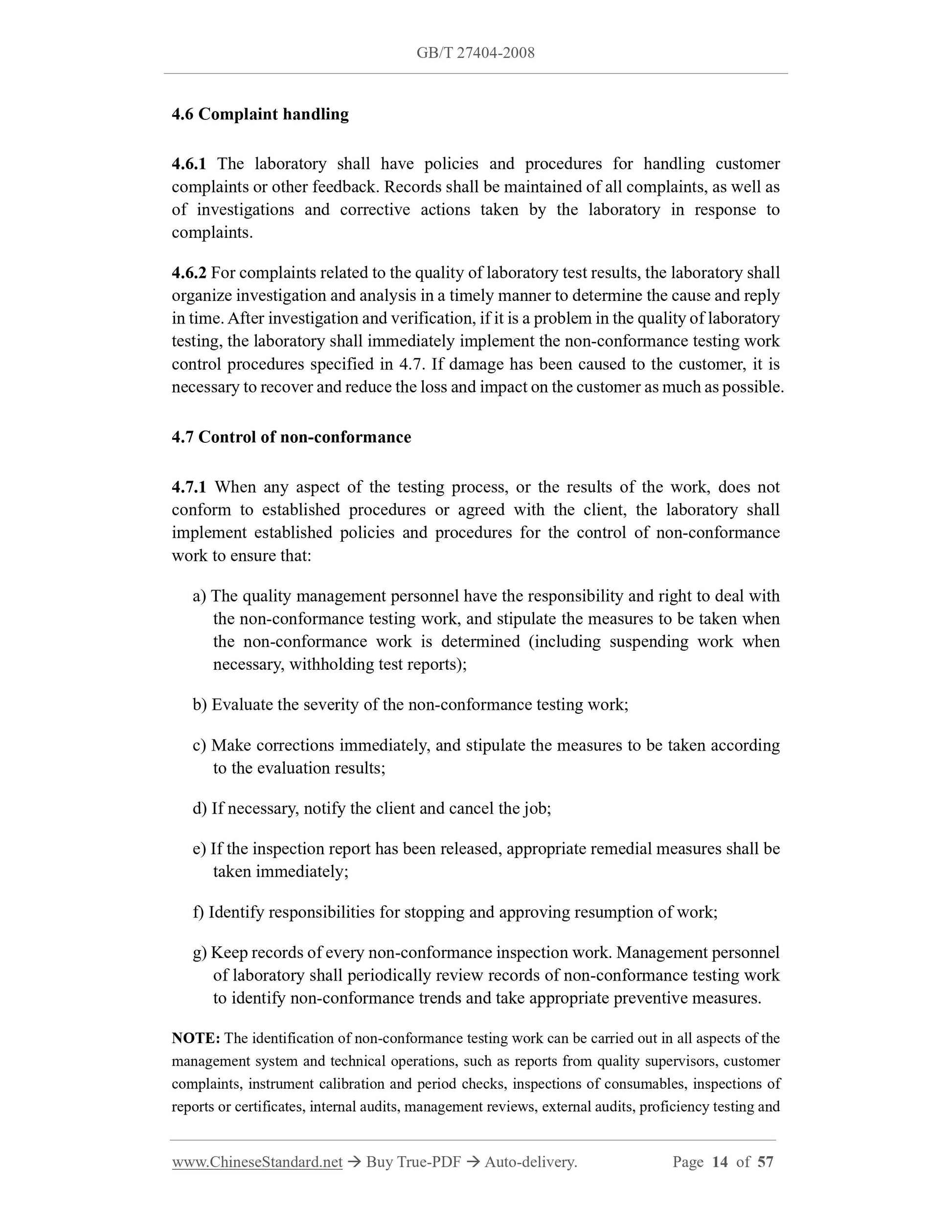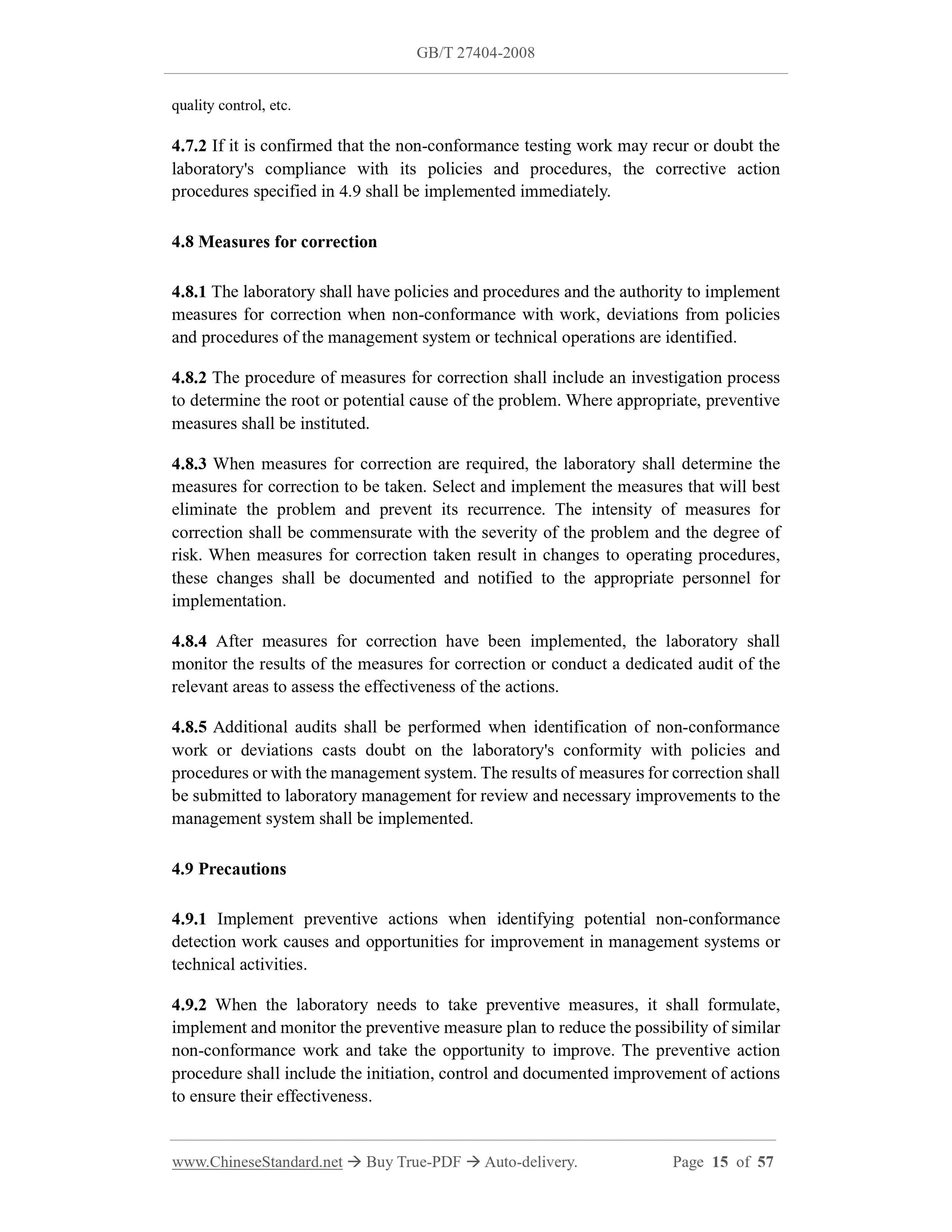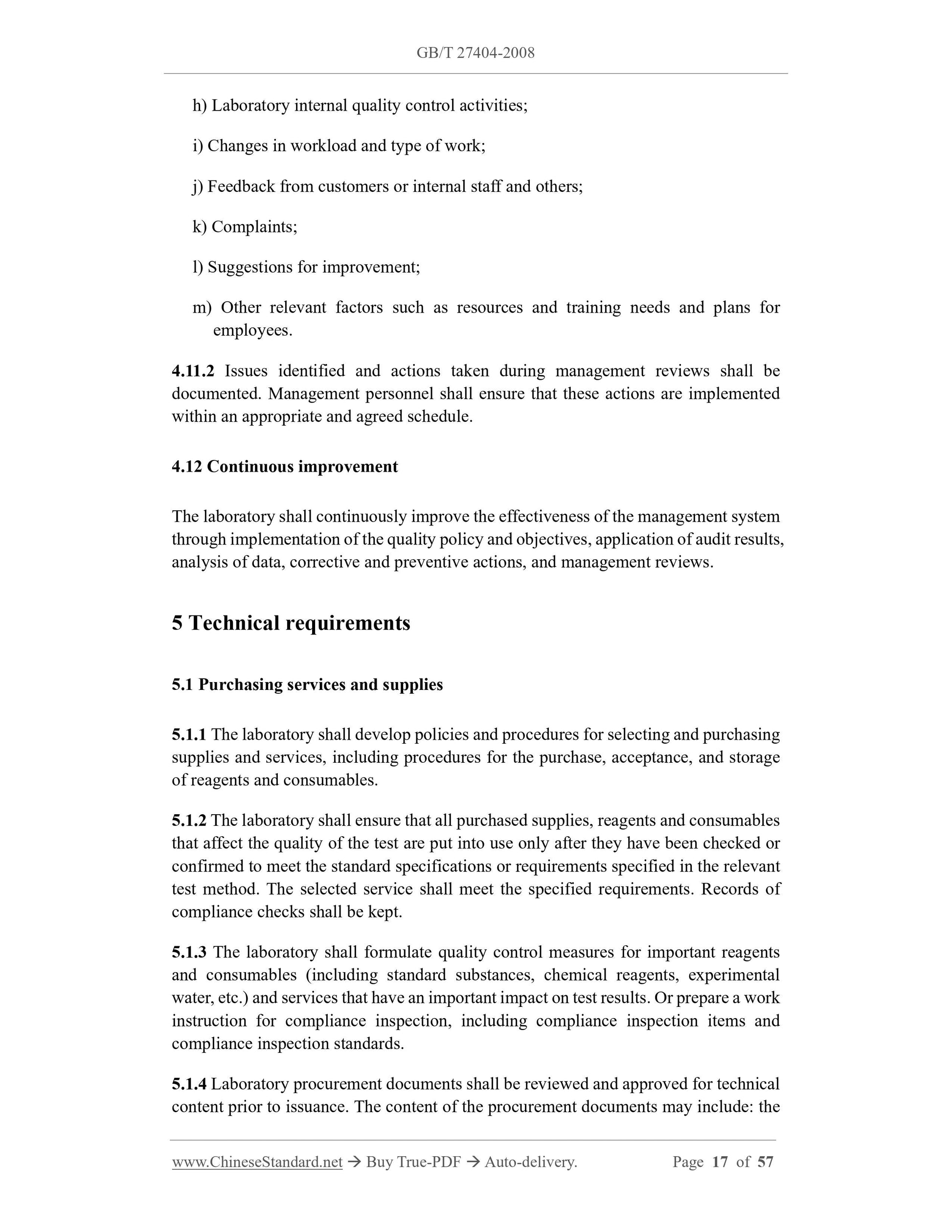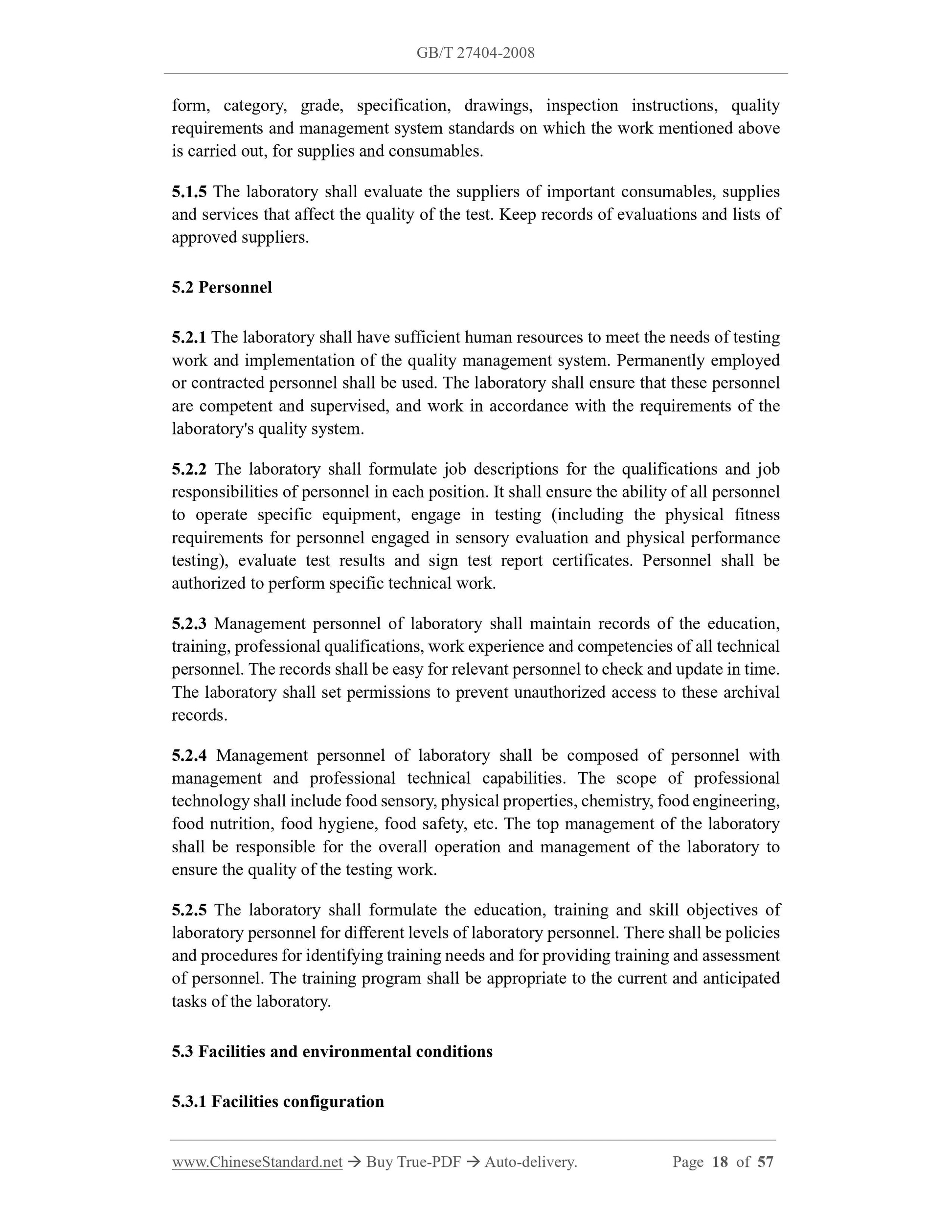1
/
of
12
www.ChineseStandard.us -- Field Test Asia Pte. Ltd.
GB/T 27404-2008 English PDF (GB/T27404-2008)
GB/T 27404-2008 English PDF (GB/T27404-2008)
Regular price
$460.00
Regular price
Sale price
$460.00
Unit price
/
per
Shipping calculated at checkout.
Couldn't load pickup availability
GB/T 27404-2008: Criterion on quality control of laboratories - Chemical testing of food
Delivery: 9 seconds. Download (and Email) true-PDF + Invoice.Get Quotation: Click GB/T 27404-2008 (Self-service in 1-minute)
Newer / historical versions: GB/T 27404-2008
Preview True-PDF
Scope
This Standard specifies the management requirements, technical requirements, processcontrol requirements and quality assurance requirements for the quality control of food
physical and chemical testing laboratories.
This Standard applies to the quality control of food physical and chemical testing
laboratories engaged in the testing of food quality (including sensory, physical and
chemical), chemical substances (including active ingredients, pesticide and veterinary
drug residues, food additives, heavy metals, toxins, environmental pollutants, etc.).
Chemical testing laboratories in other fields can also refer to it.
Basic Data
| Standard ID | GB/T 27404-2008 (GB/T27404-2008) |
| Description (Translated English) | Criterion on quality control of laboratories - Chemical testing of food |
| Sector / Industry | National Standard (Recommended) |
| Classification of Chinese Standard | A00 |
| Classification of International Standard | 03.120.10 |
| Word Count Estimation | 34,345 |
| Date of Issue | 2008-05-04 |
| Date of Implementation | 2008-10-01 |
| Quoted Standard | GB/T 1.1; GB/T 8170; GB/T 15483.1; GB/T 19000; GB/T 20000.1; GB/T 27000; GB/T 27025; JJF 1059; VIM common international metrology basic terminology [ by the BIPM (BIPM), the International Electrotechnical Commission (IEC), the International Federation of clinical Chemistry and Laboratory Medicine (IF |
| Regulation (derived from) | Announcement of Newly Approved National Standards No. 7, 2008 (No. 120 overall) |
| Issuing agency(ies) | General Administration of Quality Supervision, Inspection and Quarantine of the People's Republic of China, Standardization Administration of the People's Republic of China |
| Summary | This standard specifies the physical and chemical testing laboratories of food quality control management requirements, technical requirements, process control requirements and the results of quality assurance requirements. This standard applies to engaged in food quality, chemical substances detected in food quality control of physical and chemical testing laboratory. Other disciplines of chemical detection chamber can also refer to the use real danger. |
Share
